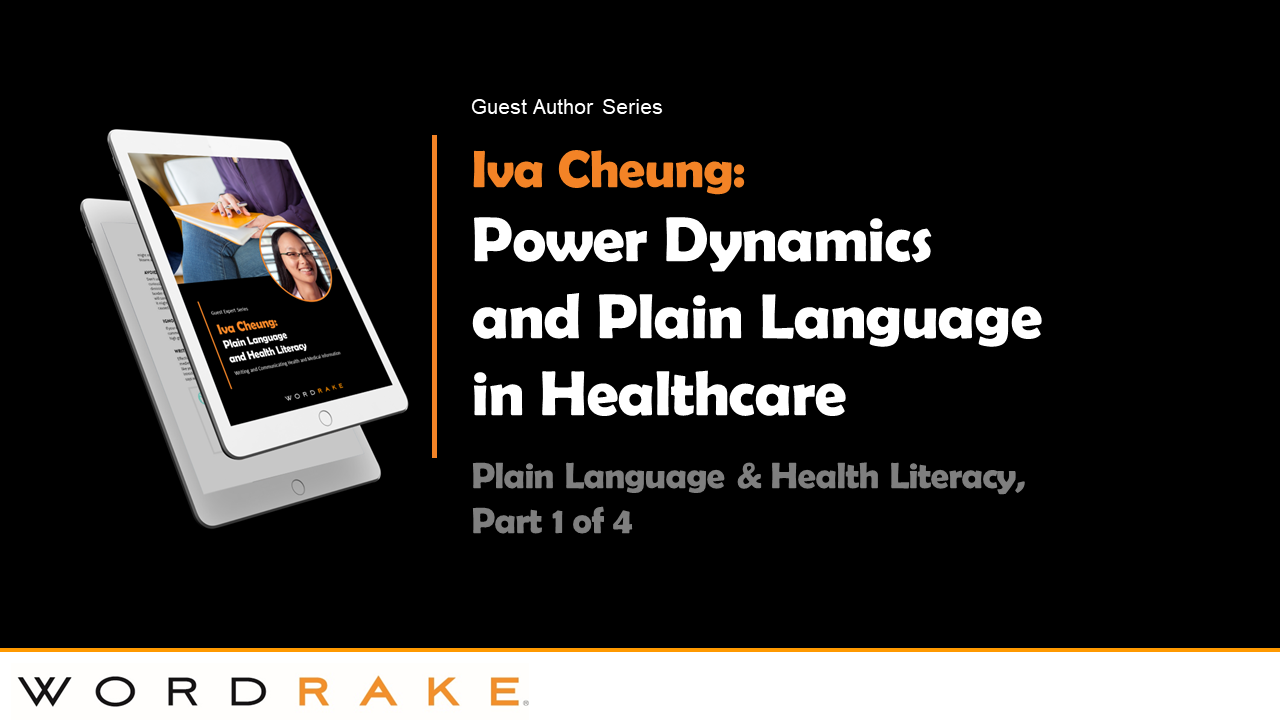Terminology note: I’ll use the term “patients” to refer to people who have direct lived experience with a health condition and who receive services from the healthcare system. Different people may prefer different terms—like client, service user, and self-advocate, among others—depending on context.
Introduction
A cornerstone of healthcare and health research is the concept of informed consent: before we accept or decline any health interventions—like medications or surgical procedures—that a healthcare professional proposes, we have the right to know the benefits and risks. But if that healthcare professional uses terminology the patient doesn’t understand, is that patient truly informed?
Misunderstandings in a healthcare interaction can happen for many reasons, but becoming aware of the role that power and stress can play—and seeing plain language as an antidote to power imbalances—can help prevent miscommunication and get us closer to genuinely informed consent.
Medical Jargon and Power
Disciplinary jargon usually evolves as a shorthand to help people working within that discipline communicate efficiently with one another. But it also divides people into an in-group and an out-group: using medical jargon usually signals you’re among a select few that have gone through years of rigorous training to become an expert on healing the human body or mind. That expertise typically comes with a certain amount of reverence or status, which, in the healthcare interaction, can translate into a power difference between healthcare professional and patient.
A doctor, nurse, pharmacist, or other clinician helping a patient might not feel especially powerful, but from the patient’s perspective, clinicians have considerable power. A patient whose life or quality of life hinges on a clinician’s decisions and recommendations can feel as though they’re literally at the mercy of their healthcare provider.
Using unnecessarily complex medical jargon, beyond causing confusion, can reinforce patients’ feelings of powerlessness because jargon is a marker of status—it signals “I know more than you do.” Jargon could help the clinician establish expertise and authority, but the patient will only accept this authority if the clinician has built a relationship based on trust. Without that foundation, jargon is often just intimidating and alienating.
Even if a healthcare professional is open to taking questions, a patient who’s afraid they’ll seem ignorant or incompetent, or who’s concerned about the consequences of challenging a clinician’s interpretation of their symptoms or experience, might not feel comfortable asking for clarification. The power imbalance between patient and healthcare provider can cause patients to leave the interaction uninformed or misinformed.
The Effect of Stress on Understanding
This power imbalance is one of many possible stressors that a patient might experience in a healthcare interaction. Many people’s encounters with the healthcare system happen at the most difficult, vulnerable times of their lives. Patients might be stressed because their symptoms are causing them pain or discomfort. And if they’re not sure what’s causing their symptoms, the uncertainty of not having a diagnosis can be another major source of stress.
Healthcare interactions can be especially stressful for members of underrepresented or historically excluded groups, because they’re seeking care in a system that has caused harm to people in their communities. Healthcare and health research have a fraught history: Among many examples, Dr. J. Marion Sims carried out painful gynecological experiments on enslaved women; the Tuskegee Syphilis Study lied to and withheld effective treatments from hundreds of impoverished Black men in Alabama; health researchers were slow to address the AIDS epidemic because, at first, it primarily affected gay men; and in several studies prisoners and people institutionalized for mental illness were given experimental drugs without their consent. People of color, disabled people, fat people, people who use drugs, people with mental illness, and members of LGBTQ+ communities continue to report that healthcare professionals dismiss their concerns or treat them with disrespect. When they do seek care, they may have to brace themselves for microaggressions and carefully consider how to respond without upsetting their healthcare provider and compromising their care.
All of this stress takes up space in a person’s working memory and interferes with their ability to process new information, including the medical information they might be trying to learn from a healthcare professional. The result is that they might not fully understand what their healthcare provider is telling them and might either give uninformed consent or misinterpret the recommendations that could help improve their health.
Plain Language As an Equalizer
Telling healthcare professionals to use plain language to help patients understand health information may seem like obvious advice: if you use words that patients already know, like “kidney,” instead of more technical equivalents like “nephrology,” they’re more likely to understand what you’re trying to tell them. But another function of plain language is that it reduces the cognitive load of new information. Packaging information in a way that requires less mental effort to understand makes it more likely that patients have enough room in their working memory—even under stress—to process the information you’re giving them.
Beyond making health information easier to understand, plain language helps flatten the power hierarchy, reducing miscommunication and stress and building trust. By avoiding complex jargon that signals status and by giving patients information in a way they can understand, you’re inviting them to be active participants in making decisions about their healthcare. You’re centering their needs and experiences and giving them autonomy and control, which is the goal of informed consent. You’re making the healthcare interaction less intimidating and fostering a relationship where the patient will be more comfortable asking questions.
It’s no exaggeration to say that, in health communication, misunderstandings could have life-or-death consequences. Plain language is an essential tool that can counter misunderstandings on several fronts—directly, with terminology the patient is familiar with, and by shifting the social dynamics of the healthcare interaction to be more patient centered and trauma informed. Plain language practice reminds us that how we make our audience feel can be just as important as conveying a clear message.
About the Author
Iva Cheung is a Certified Professional Editor, indexer, and researcher specializing in communication accessibility and plain language. She has won three Editors Canada awards: the Tom Fairley Award for Editorial Excellence, the President's Award for Volunteer Service, and the Karen Virag Award for promoting the editing profession. She holds a Master of Publishing degree and a PhD in health sciences, and she teaches a course on health literacy for Simon Fraser University's Plain Language Certificate program. Find Iva at ivacheung.com or follow her on Twitter.
Series on Plain Language and Health Literacy
This is the first piece in a series of four articles on plain language and health literacy by award-winning editor Iva Cheung. Plain language can improve communication in many professions, and with this series, we hope to show how plain language and clear, thoughtful word choice is integral to effective healthcare.
To make your writing easier to digest, turn to WordRake editing software—it generates edit suggestions with a single click. WordRake helps you weed out jargon and unnecessary words, and suggests simpler phrasing that's easier for readers to understand. WordRake editing software is available for Microsoft Word and Outlook on Windows, or for Microsoft Word only on Mac. You can try it free for 7 days.








